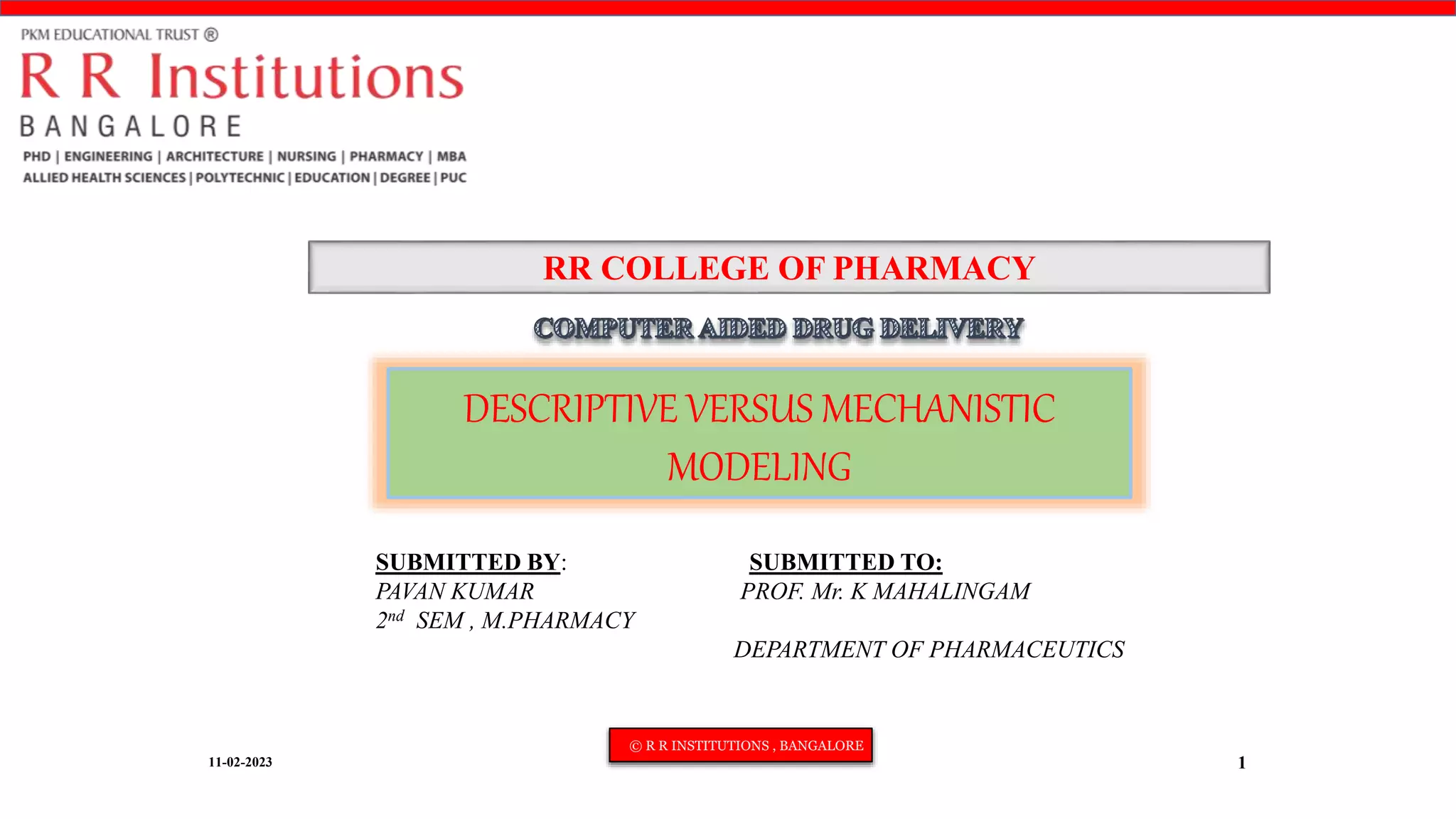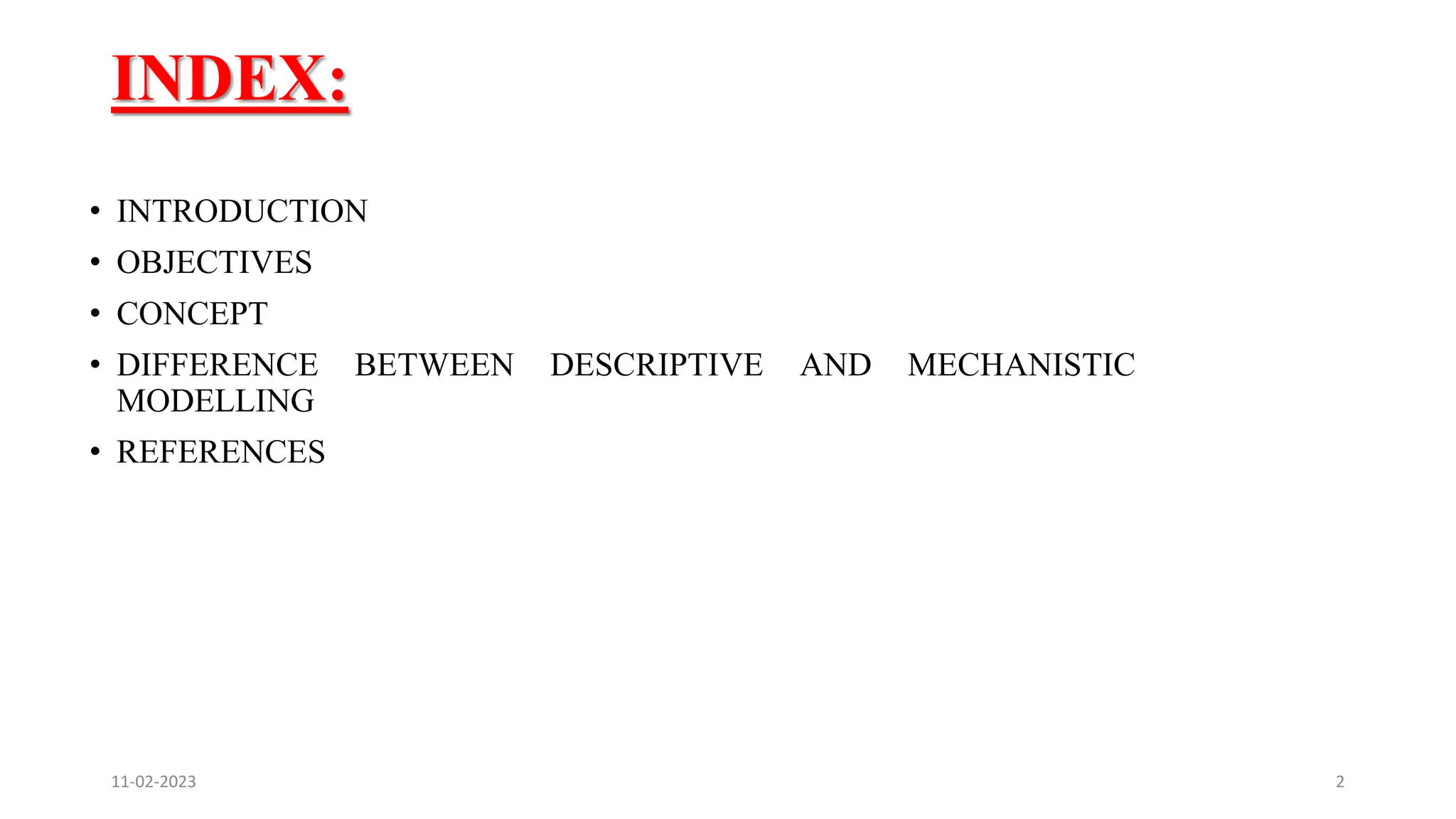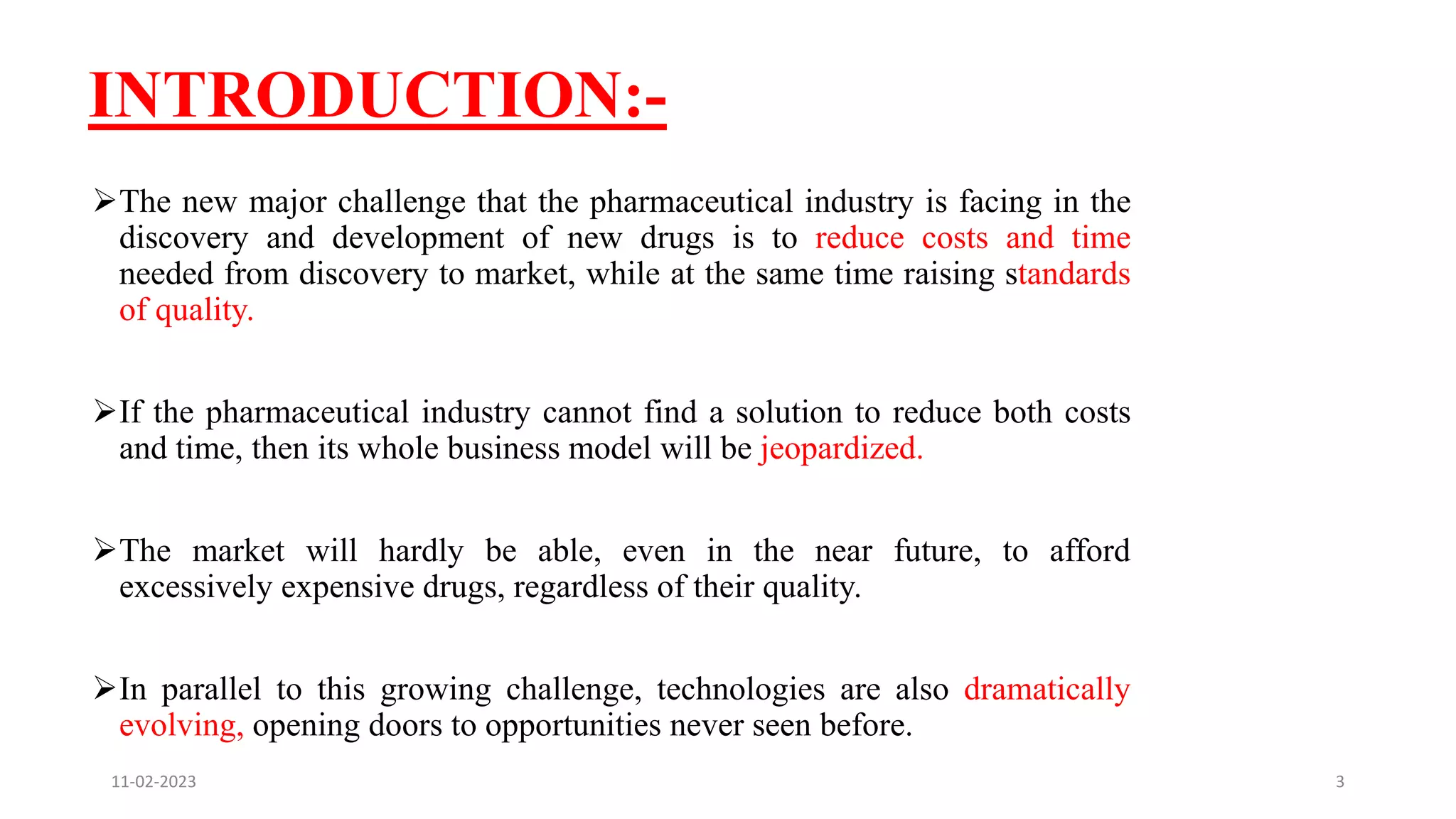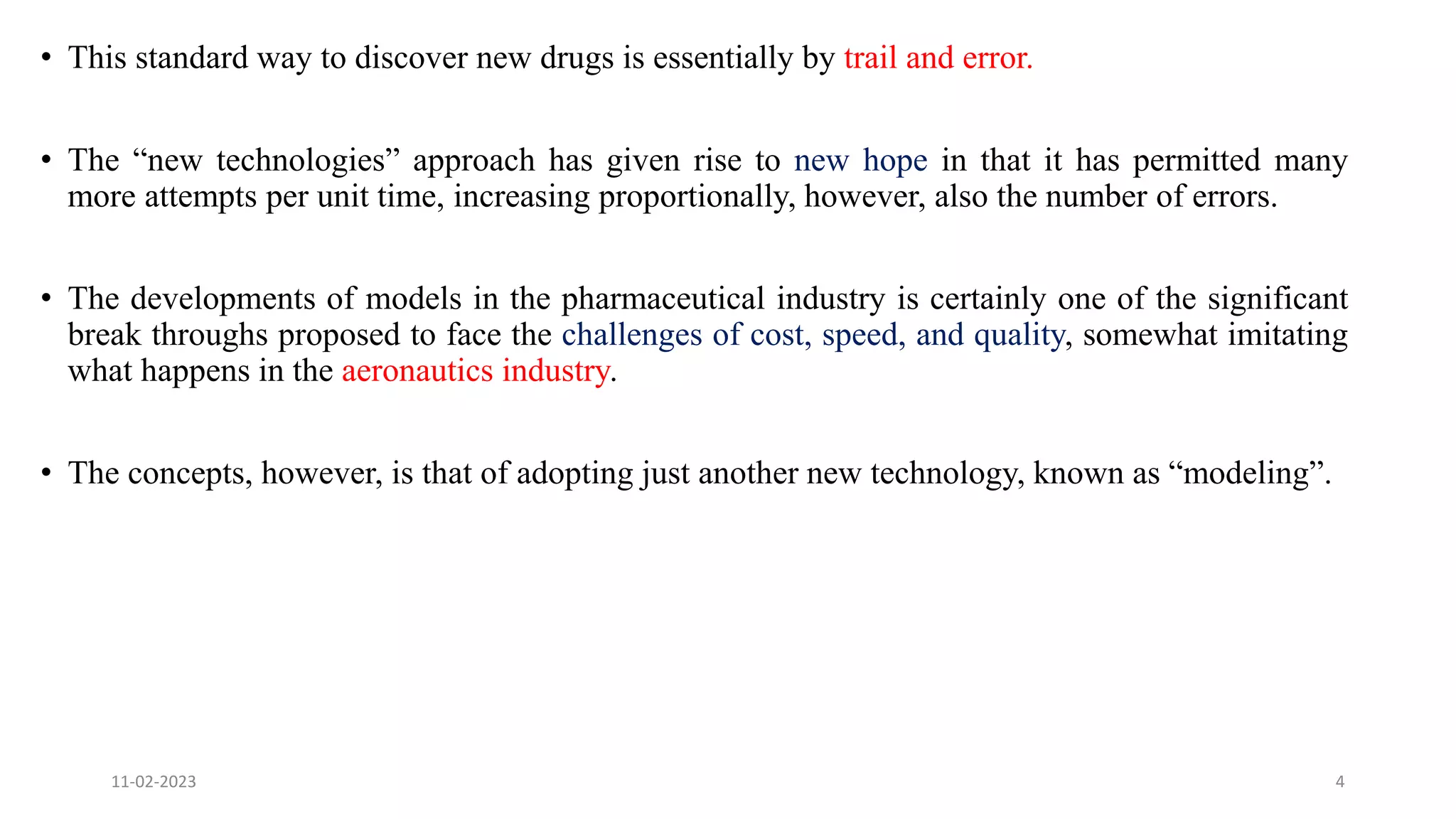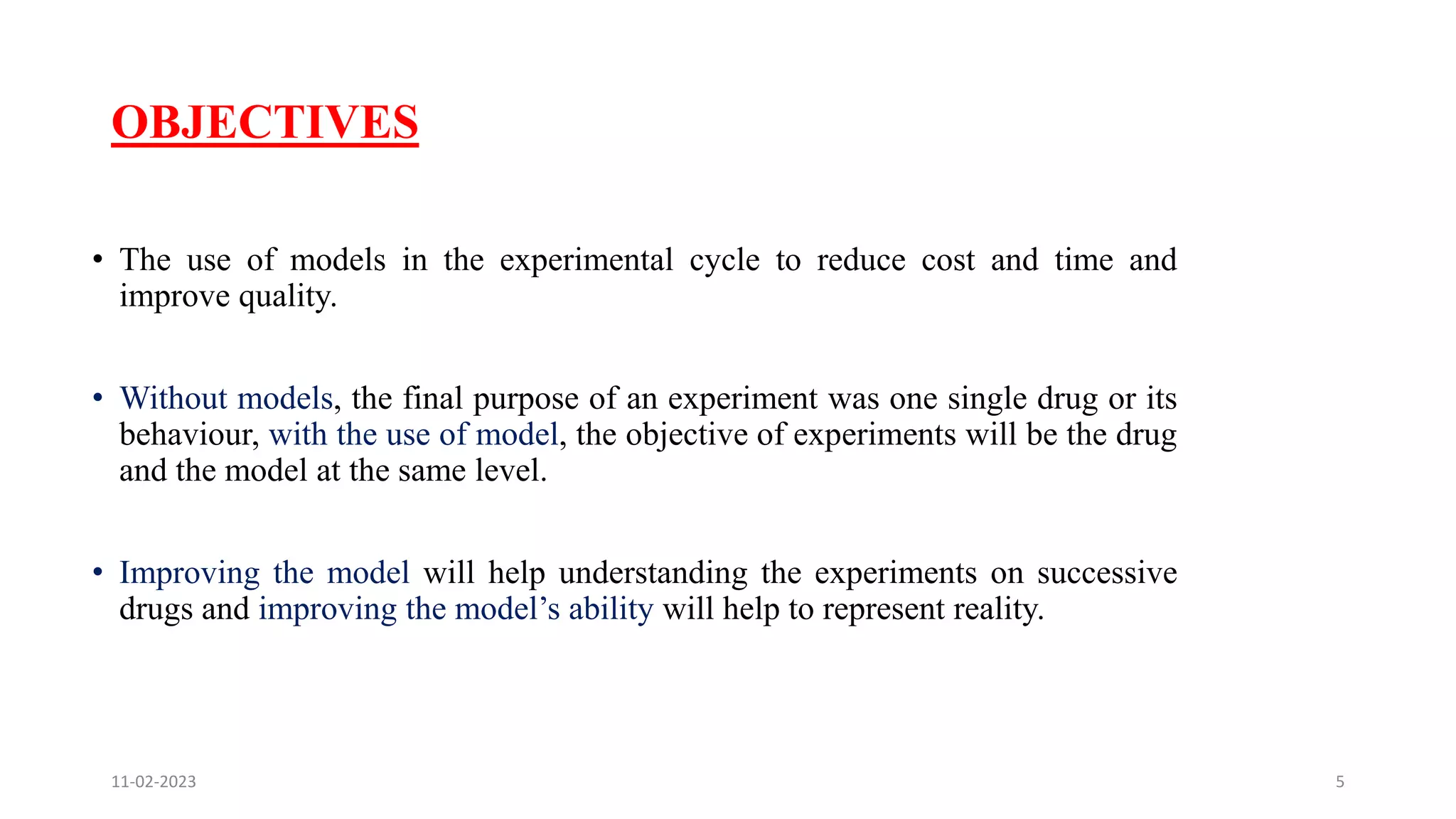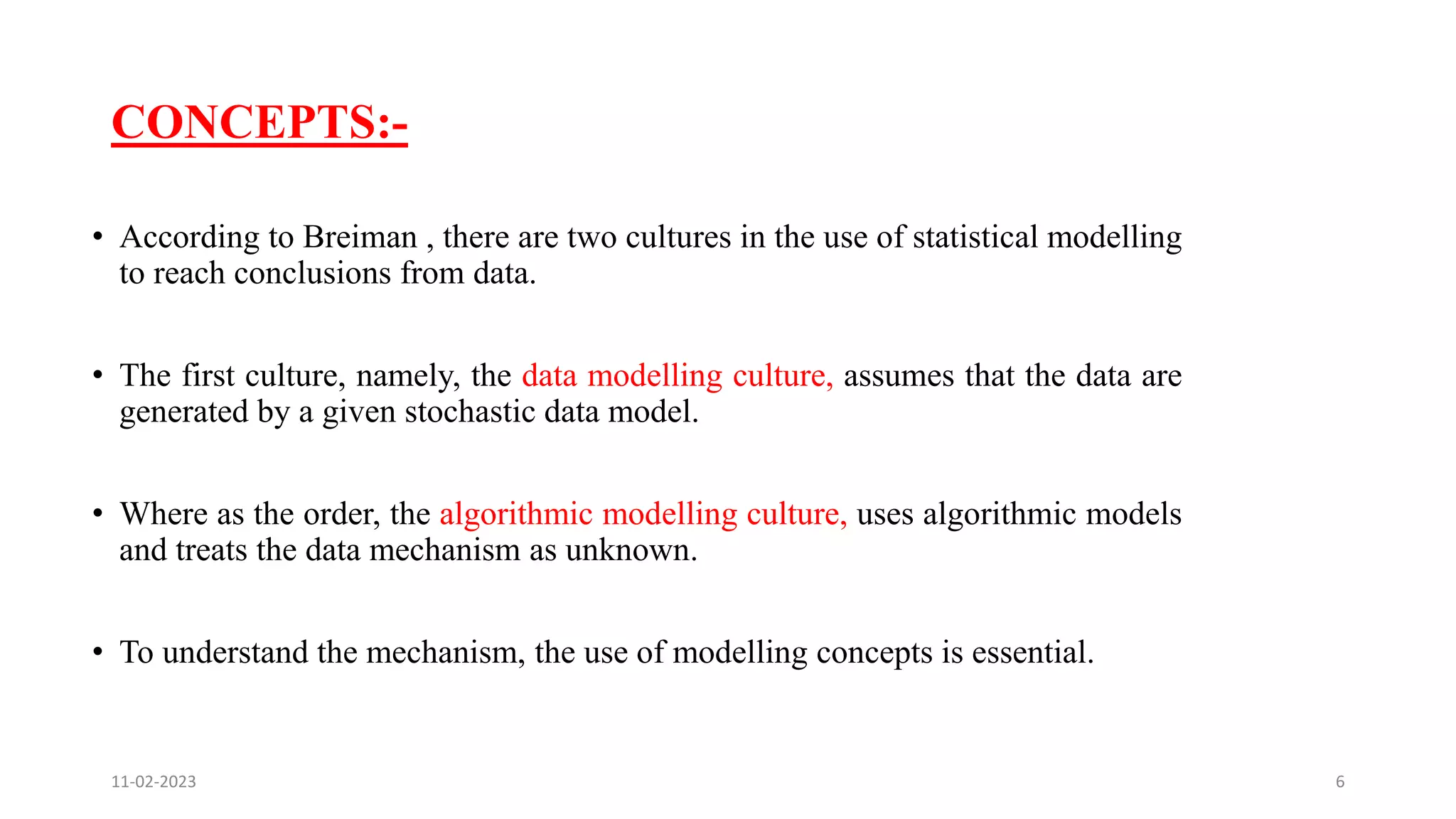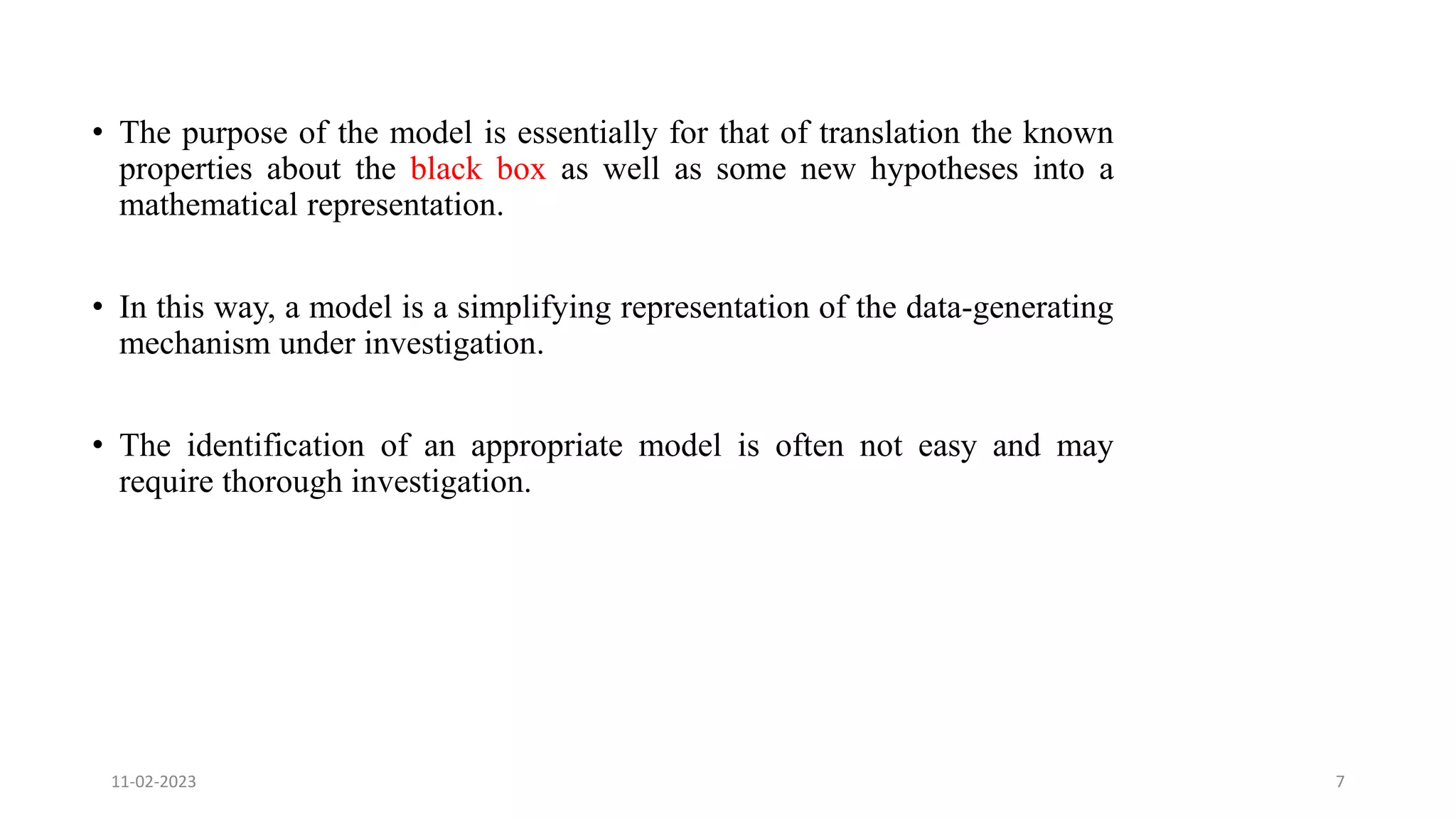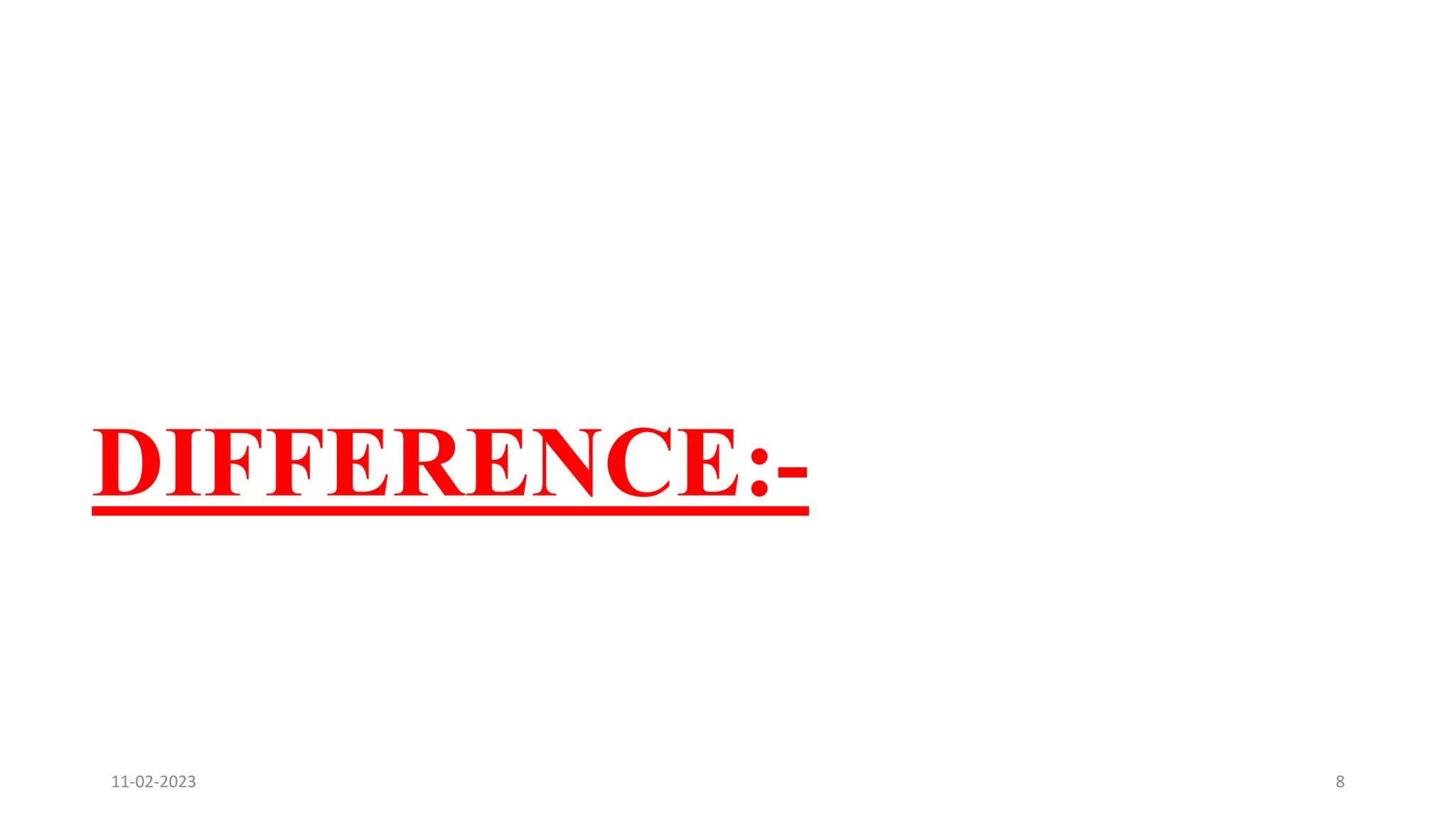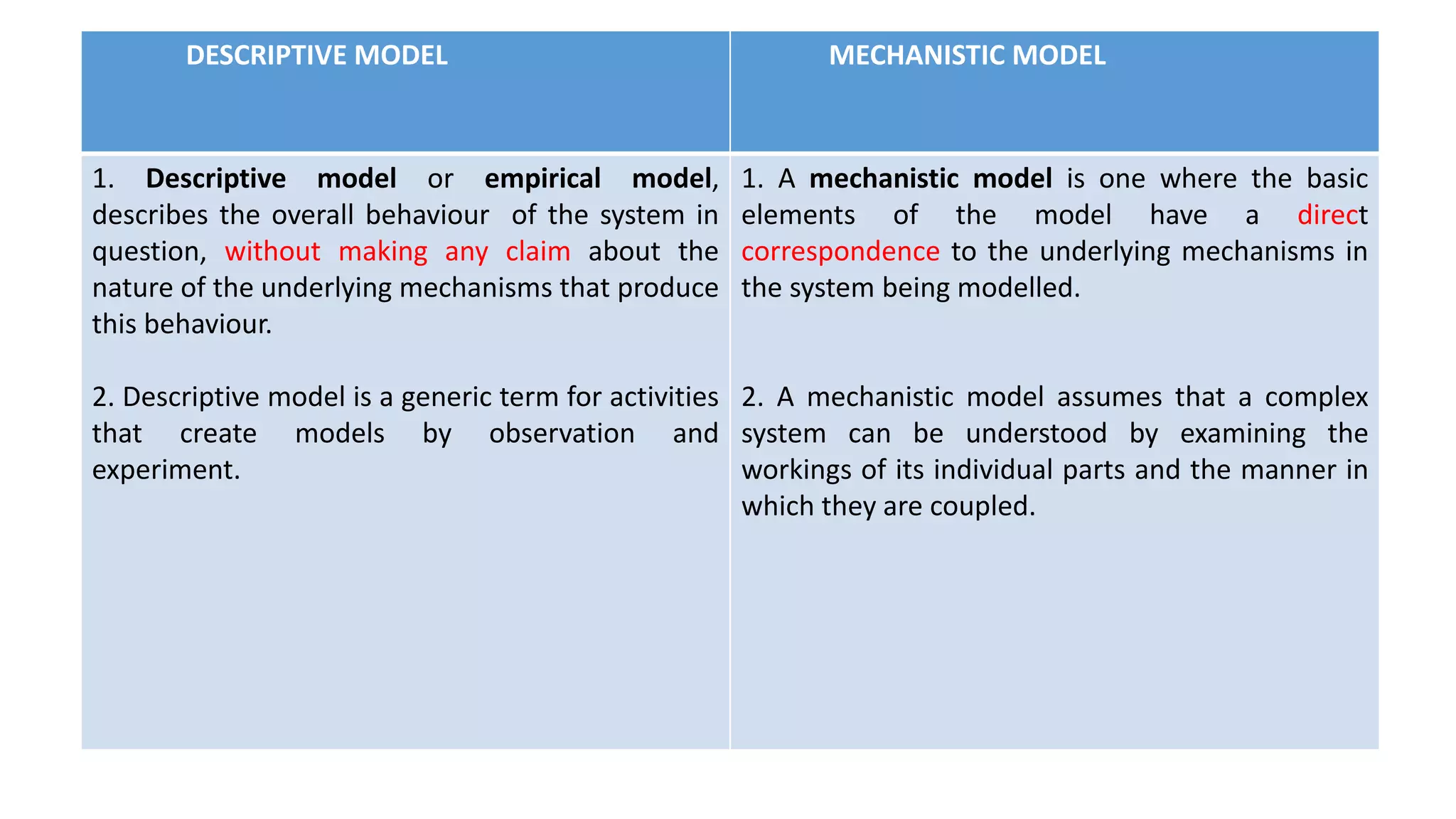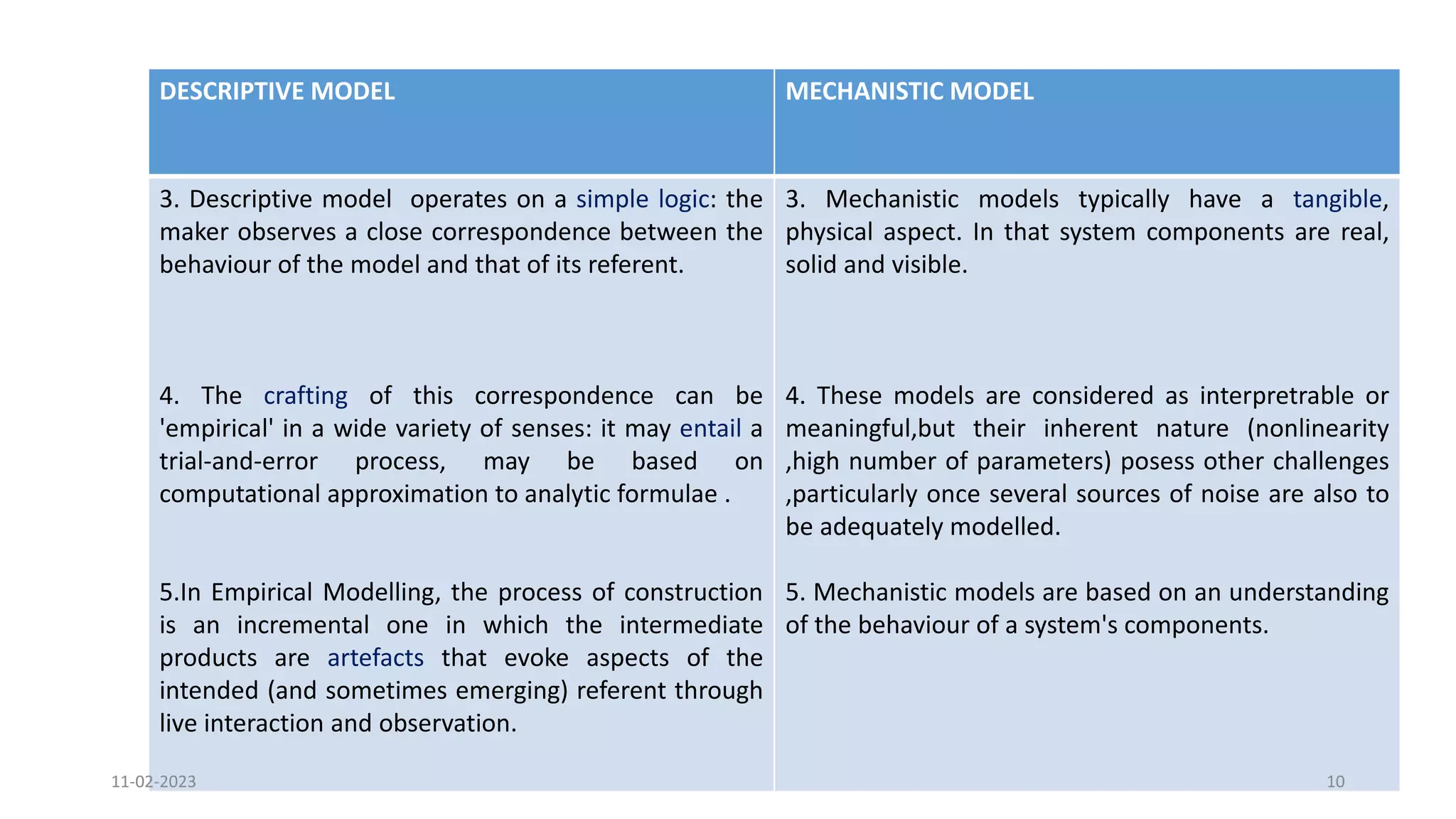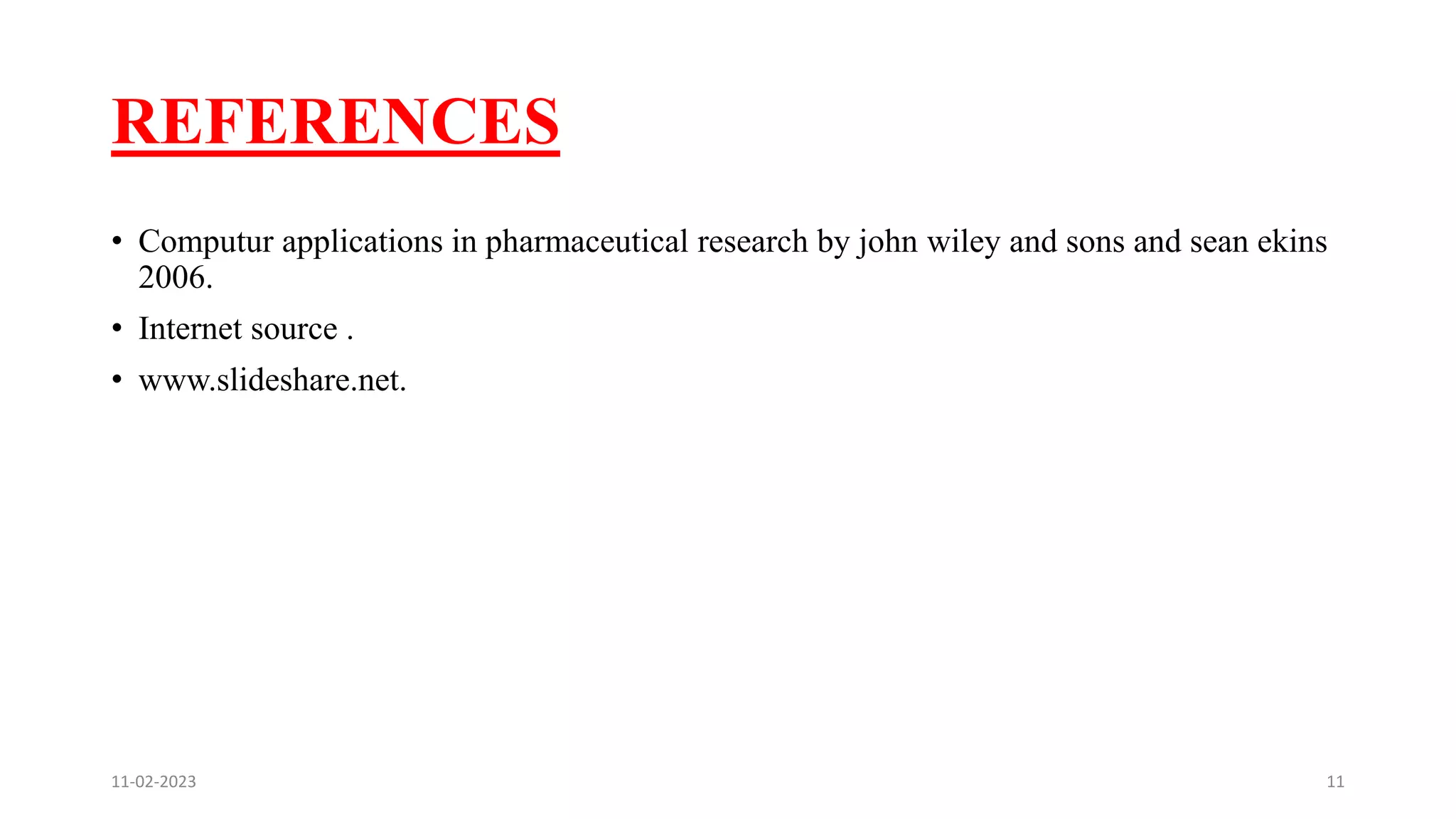The document discusses descriptive versus mechanistic modeling approaches. Descriptive models describe overall system behavior without claiming to represent underlying mechanisms, while mechanistic models directly correspond to real system components and interactions. Key differences are that descriptive models are empirical and incremental, while mechanistic models have tangible system representations but can be challenging due to nonlinearity and noise. The objectives of modeling are reducing drug discovery costs and times through experiment iteration and model improvement.
